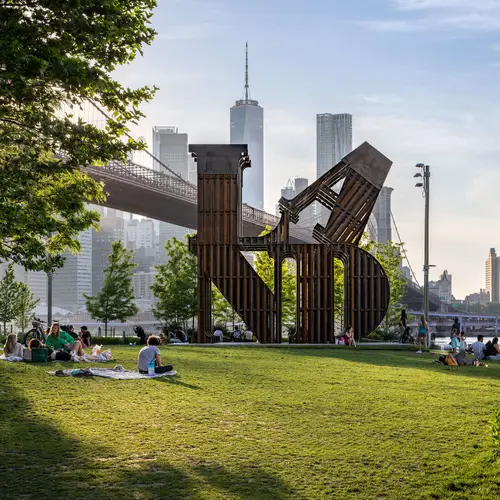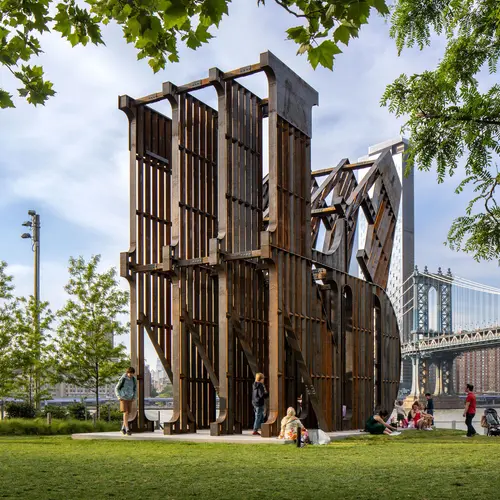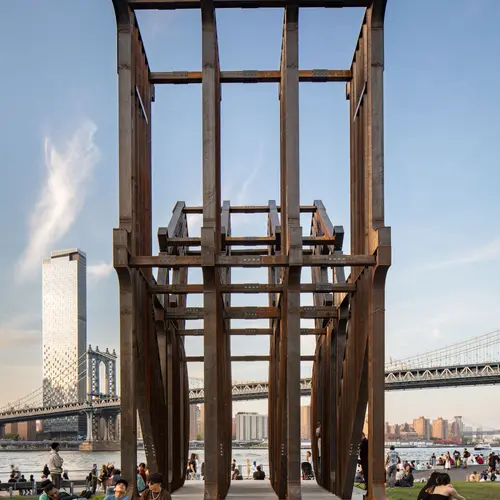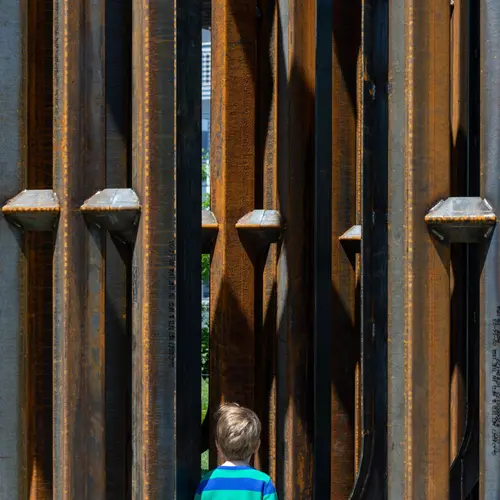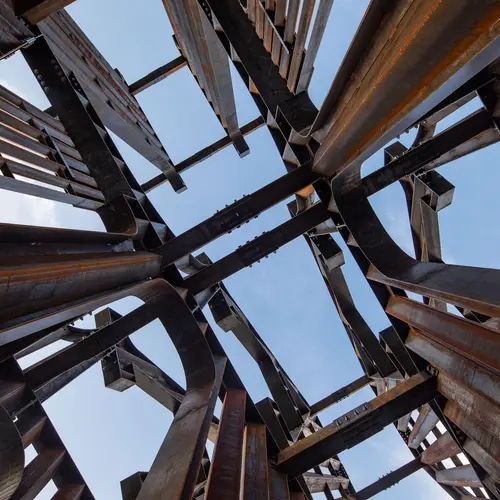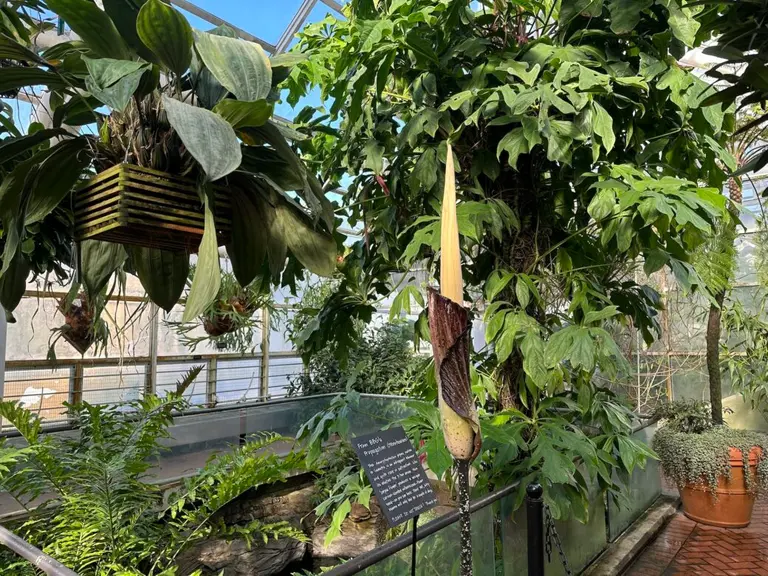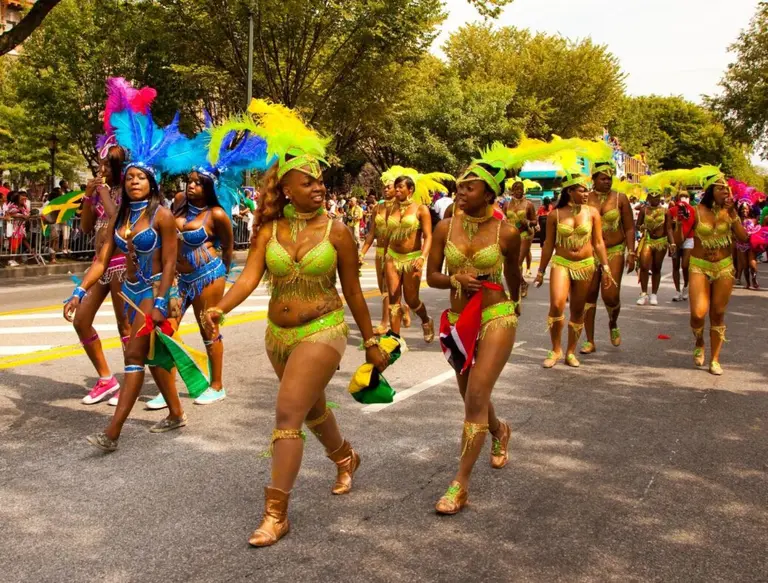In reference to U.S. border wall, new Brooklyn sculpture explores relationship with land
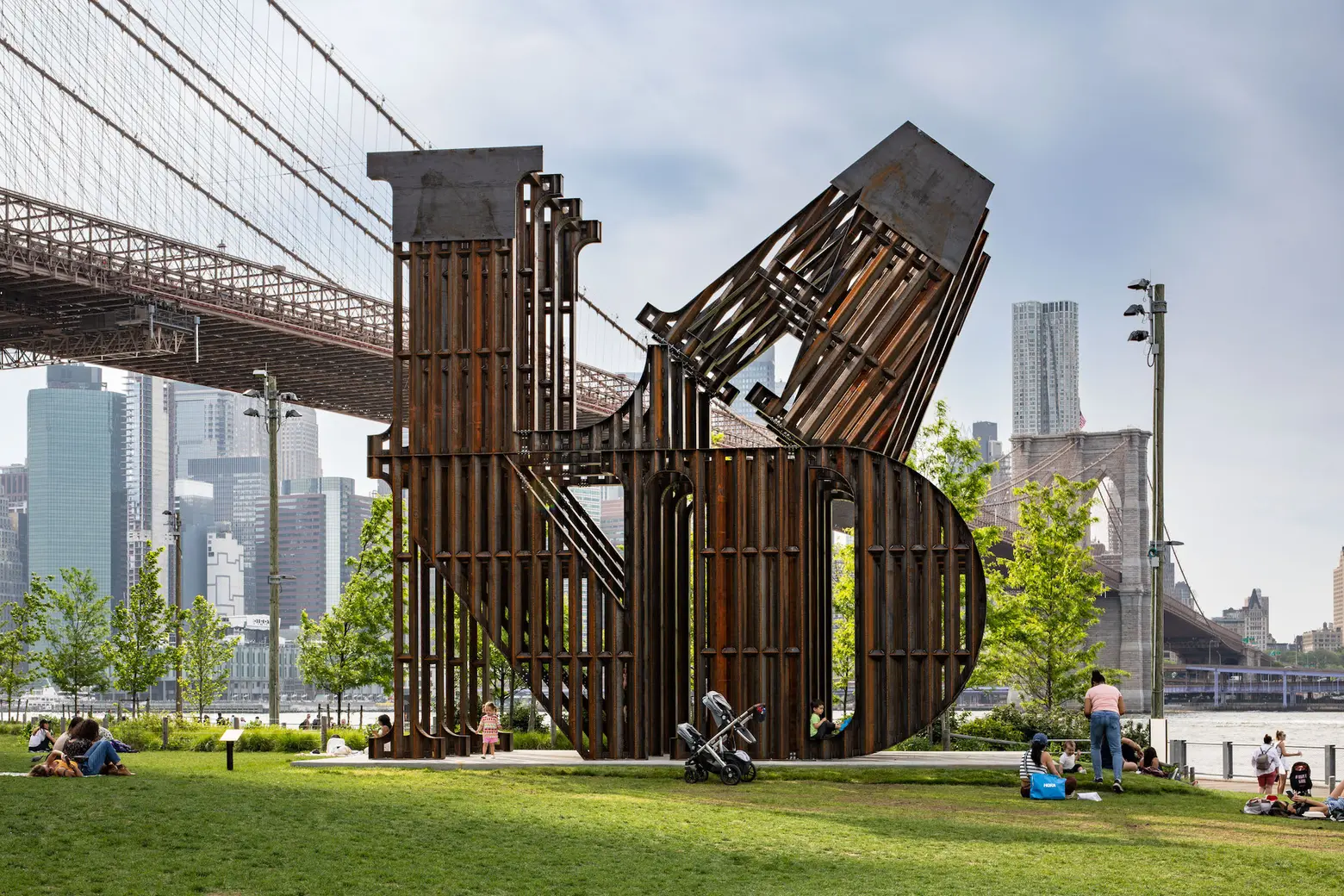
Photo credit: Nicholas Galanin, In every language there is Land / En cada lengua hay una Tierra, 2023 Corten steel. Courtesy of the artist and Peter Blum Gallery. Images by Nicholas Knight, courtesy of the Public Art Fund, NY
A new public art installation in Brooklyn questions how colonization and its impact on migration affect our relationship with land. Created by indigenous Alaskan artist Nicholas Galanin, In every language there is Land / En cada lengua hay una Tierra is a 30-foot-tall steel sculpture made of the same materials as the United States-Mexico border wall that spells out the word “LAND.” The sculpture will be on view in Brooklyn Bridge Park on the north side of the Empire Fulton Ferry Lawn through the fall.
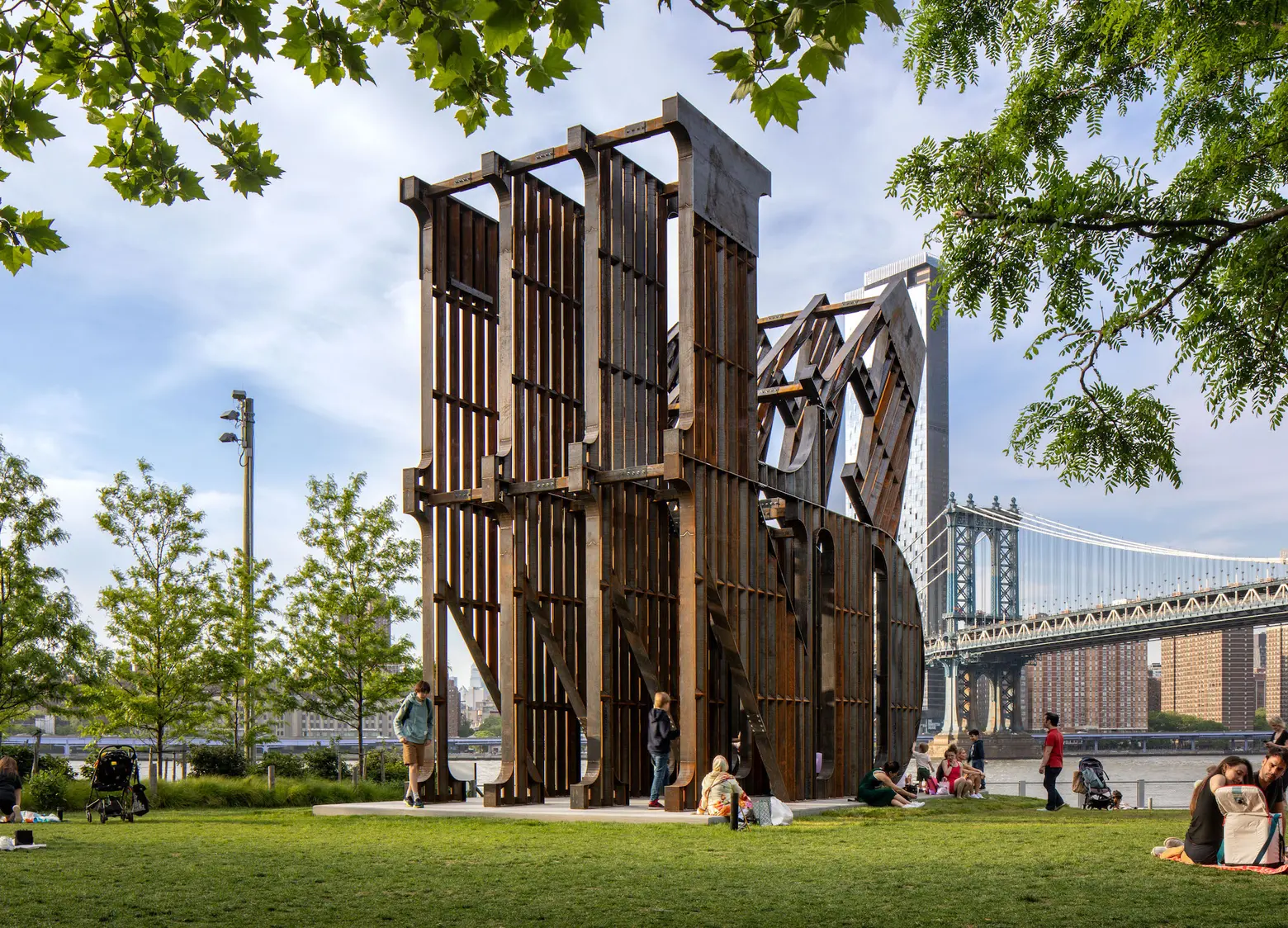
Based in Sitka, Alaska, Galanin’s work is heavily influenced by his cultural background. As a Lingít and Unangax̂ artist whose work focuses greatly on the concept of Indigenity and immigration, Galanin’s newest creation builds upon his focus on making layered artworks that tackle themes like culture and social conditions while disregarding “binary” classifications.
Land takes the concept of the border wall, a divisionary structure that Galanin views as oppressive, into a sculpture with a deep connection to the land.
Weighing 34,000 pounds, the sculpture is made up of four different layers that create a dynamic, open structure. The same kind of anti-climbing plate found on top of the US-Mexico border wall is installed on top of the towering letters.
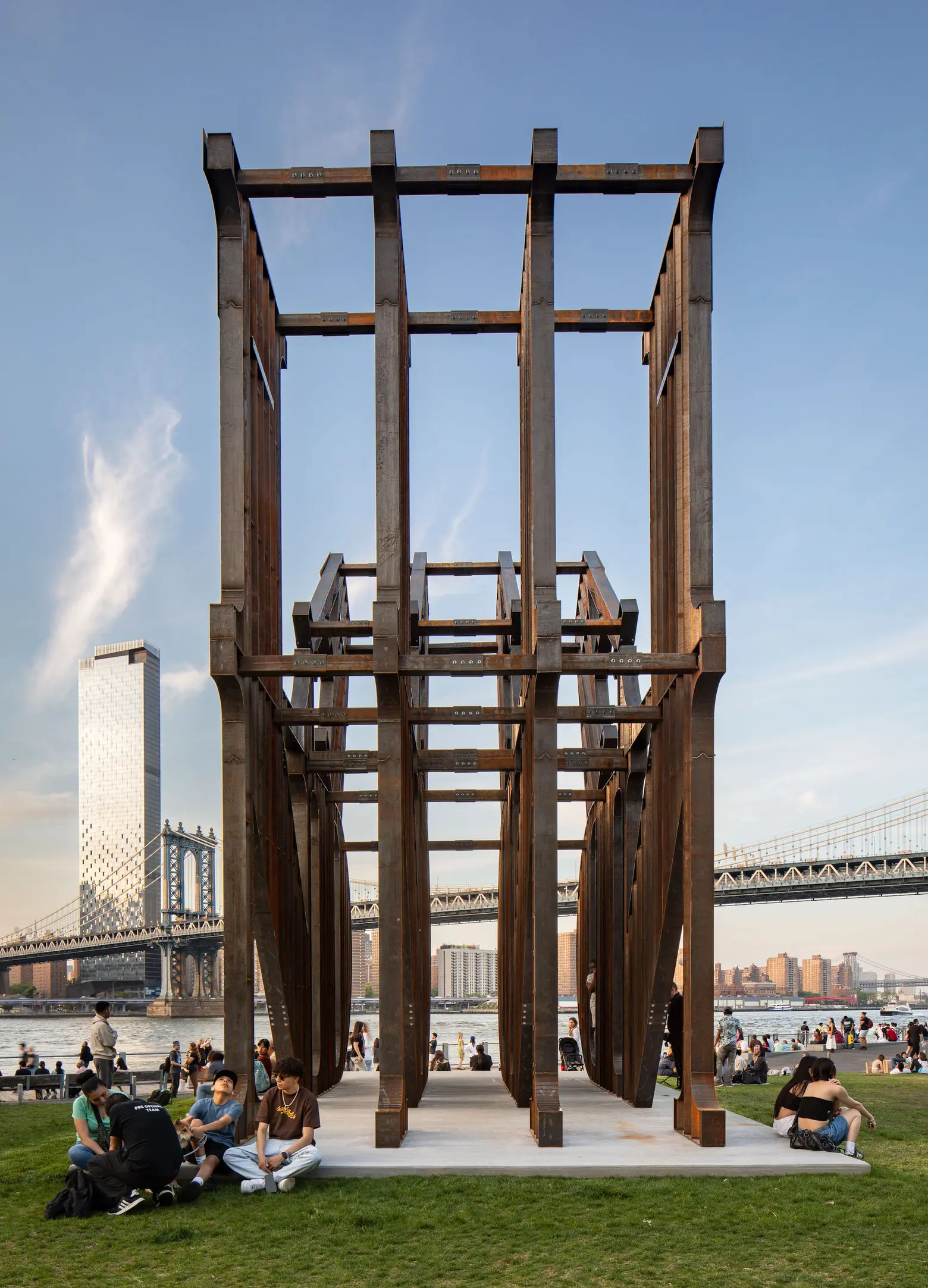
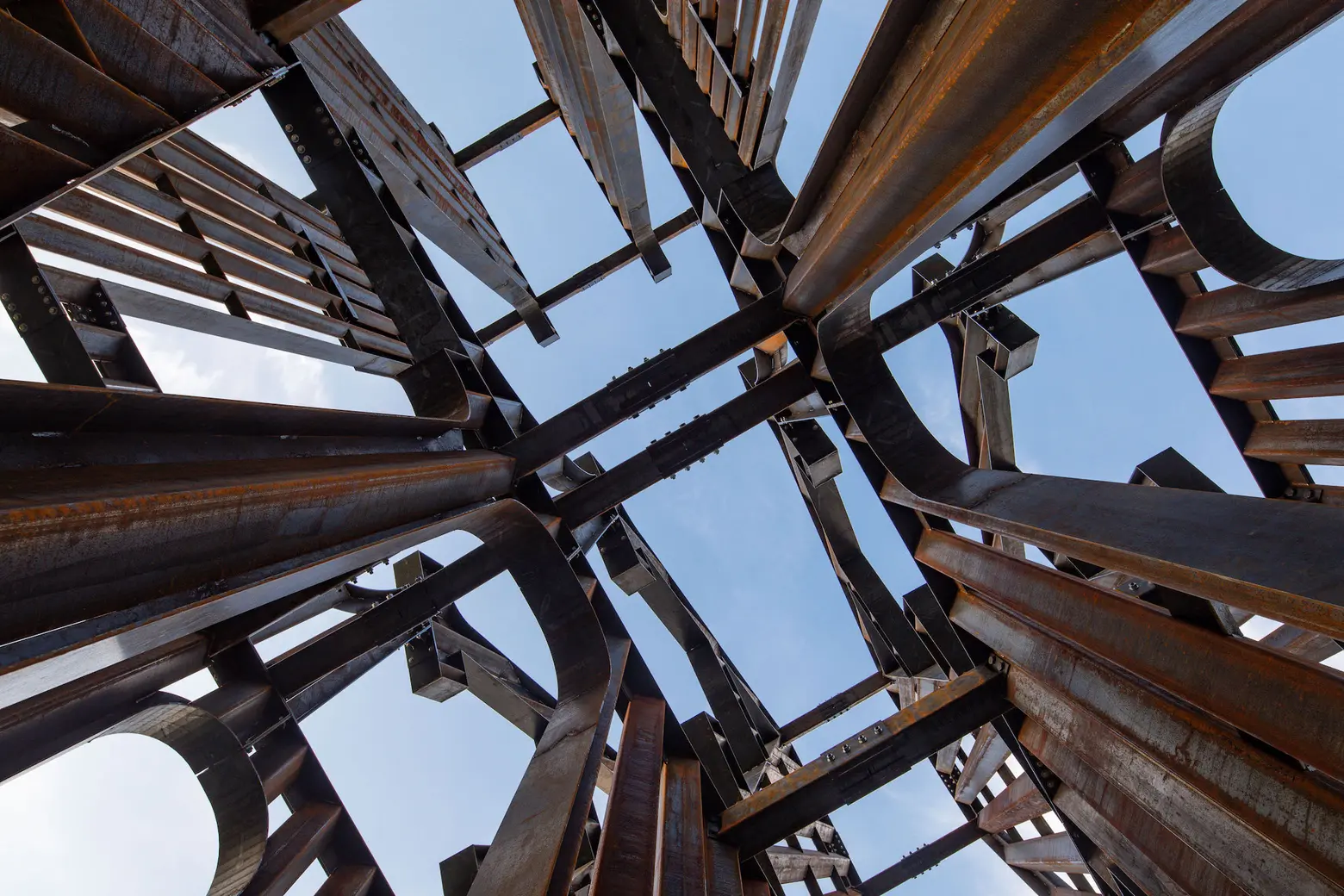
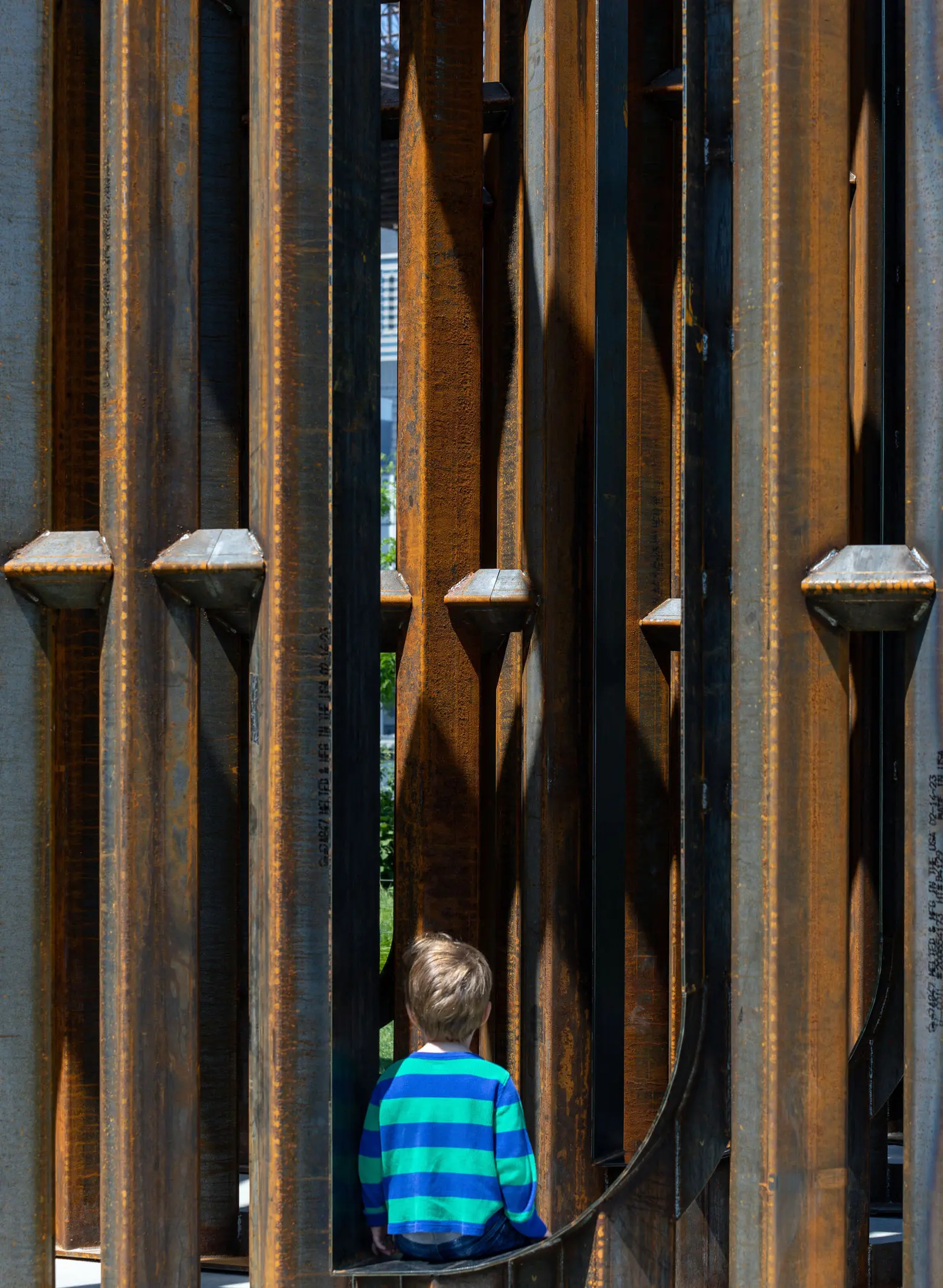
The structure’s intricate shape transforms as viewers experience it from different perspectives. When viewed head-on, the sculpture reads “LAND,” but as spectators move around it, its form becomes abstract. The dynamic nature of the sculpture represents the ever-changing nature of borders and division and reflects Galanin’s Indigenous view of a “united natural ecosystem” and way of life.
The artwork’s title, which combines English and Spanish, represents two languages forced upon people since the colonization of North America. Land serves as a reminder that despite the removal of rights, languages, and access to land and water, Indigenous peoples will be resilient and permeate through borders.
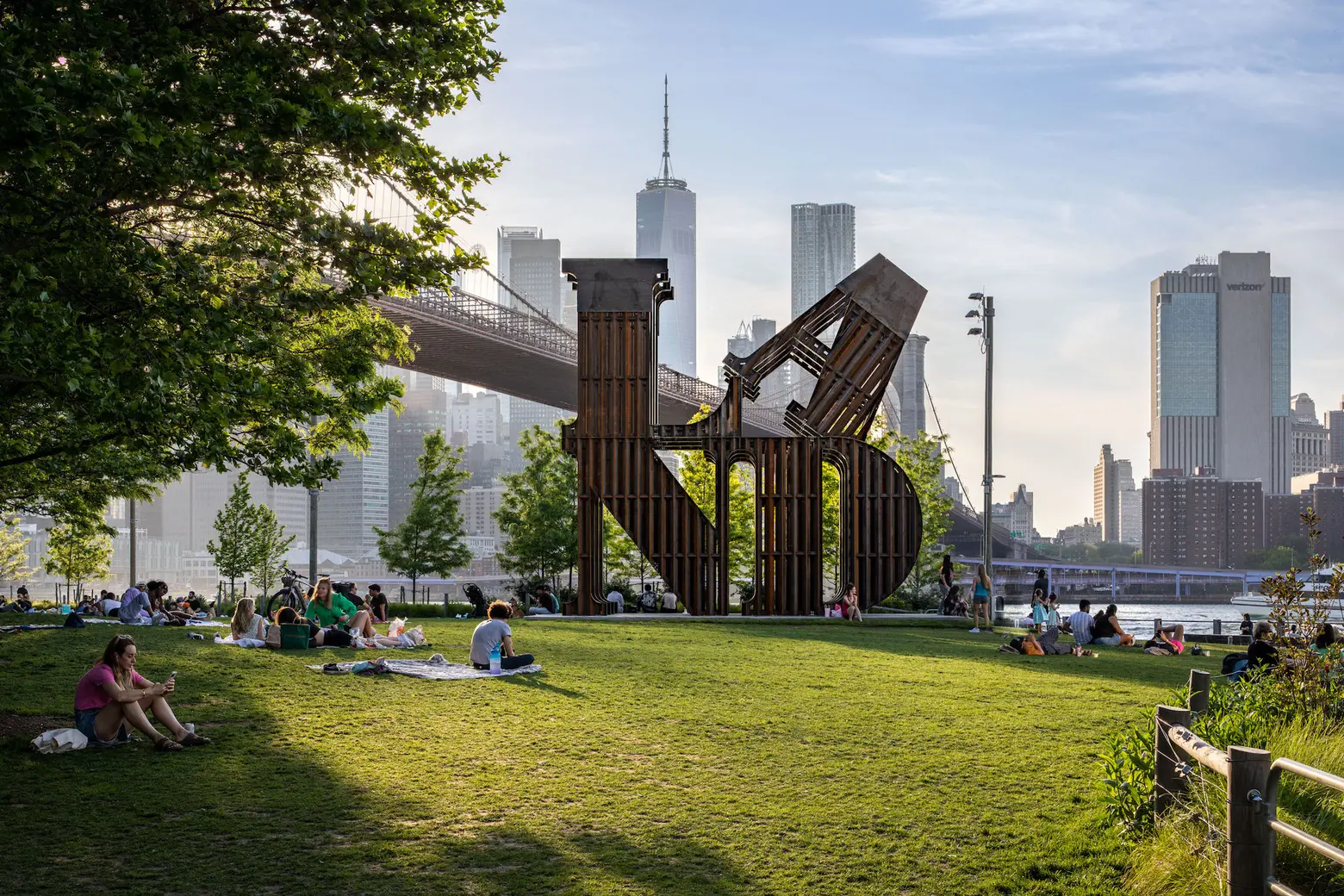
“Indigenous care for Land and community is rooted in connection based on mutual sustainability. Rather than nationalism or capital, this perspective always embodies a deep respect for life beyond any single generation. In every language there is Land / En cada lengua hay una Tierra questions barriers to Land, which directly reflect barriers to love, love for Land, community, and future generations,” Galanin said.
In every language there is Land’s design is inspired by pop art, especially reminiscent of Robert Indiana’s 1966 sculpture LOVE, which spells out the word “LOVE” in a similar way. Land draws upon recognizable pop art to represent mass media and pop culture’s involvement in the spread of nationalism.
Galanin’s In every language there is Land / En cada lengua hay una Tierra was curated by the Public Art Fund’s Artistic & Executive Director Nicholas Baume with support from Assistant Curator Jenée-Daria Strand.
RELATED:
- Colorful paintings by artist Wendy Red Star on display at 100 bus shelters across NYC
- New public art exhibit in Brooklyn Bridge Park explores ‘hybrid identities’ created by diaspora
- New large-scale installation of ringing bells to open at Brooklyn Bridge Park
All photos by Nicholas Knight, courtesy of the Public Art Fund, NY
